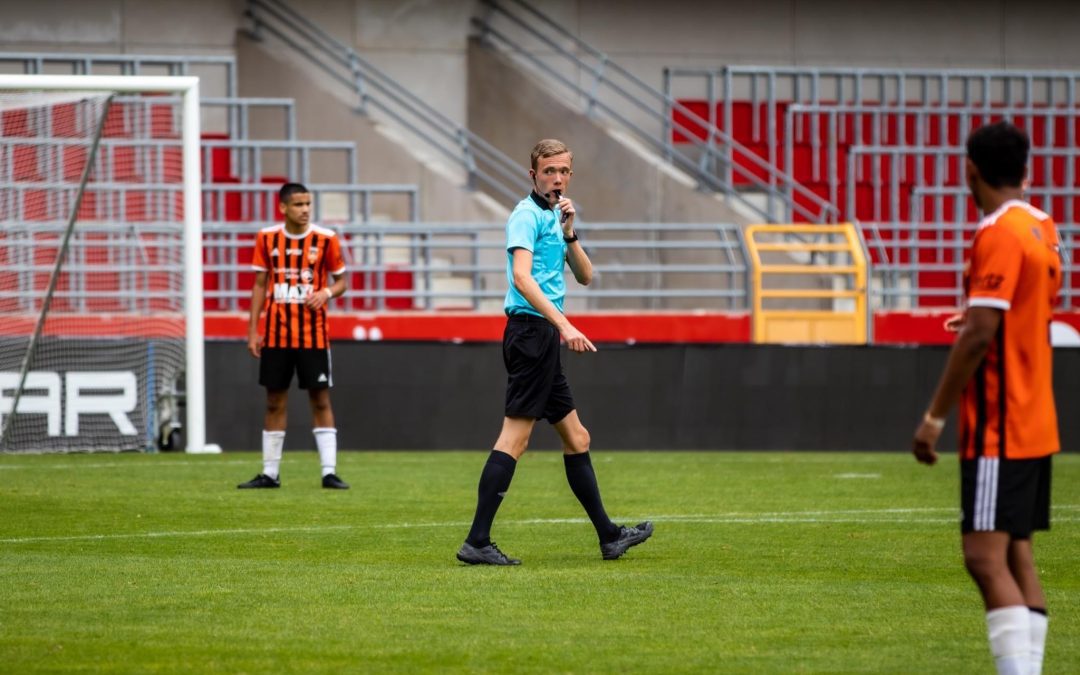This blogpost is written by Albin Wrångemyr
Hi, I am Albin Wrångemyr from Sweden. I am 22 years old, and I’ve been refereeing football since 2017. On Sunday, 16 July, I went to Gothenburg to referee the world’s largest youth football tournament, Gothia Cup, with two colleagues. Players, managers, parents and everyone else who watches the matches expect us always to make the right decisions. For us to succeed, there are several tools to support us with refereeing. A good tool is a communication system. Headsets allow us to communicate with each other in ‘real time’ to make the best decisions. So in this blog, I will share 5 tips on how to use headsets in the best way.
1. Clear communication
During a game, often three referees speak and help each other with making correct calls (decisions). Therefore it is essential to have decided before the game how the communication will work. A referee makes approximately 600 calls per game; if all referees speak simultaneously, making correct and efficient calls is difficult. Every referee needs to know when to speak and when to stay silent. That’s why it is essential to have decided before the game starts, how every referee is supposed to react to offsides, corner kicks, free kicks, or when a mass confrontation erupts. The terms you use with the referee team during the game must also have been decided before the game.
2. Calm
One of the most important qualities of being a referee is to remain calm, which stays true when wearing the headset. It will be easier to communicate with the others in the team if your tone stays at an average speaking volume. If your colleagues do not understand or can’t perceive it, you need to repeat your commando until you get confirmation from someone in the team.
3. Repetition
To reduce misunderstandings, repeat your message a couple of times in the headset. Especially as an assistant referee, so that the head referee understands what is happening. Examples would be to say: “Offside, offside, offside”, “Free kick, free kick, free kick”, or “Warning, warning, warning”. When there is a throw-in, you would say “Throw-in, green, green, green” to accentuate which team is doing the throw-in.
4. Say only that which is happening
As a referee, it is crucial to only communicate, via the headset, what is really happening. Examples are offside, free kick, play, and so on. In other words, you shouldn’t say “No foul”, “No offside”, or “No penalty kick”, as it could be very confusing for the head referee. He might misunderstand it and believe it has to be a penalty kick, while the assistant referee said: “No penalty kick”.
5. Feedback to colleagues
Remember that when you are refereeing, you are a team. Since teamwork is vital, one good tip is to use the headset to support your colleagues. For example, you could say: “Great call”, ” Right to take that warning”, or ”Keep an eye on number 9 is arguing a lot with other players“.
INTERVIEW with Mark Clattenburg about the added value of using referee headsets
“It is what my wife says with a dishwasher. When you haven’t got one you don’t know the difference. But when you get one, it changes your life.”



